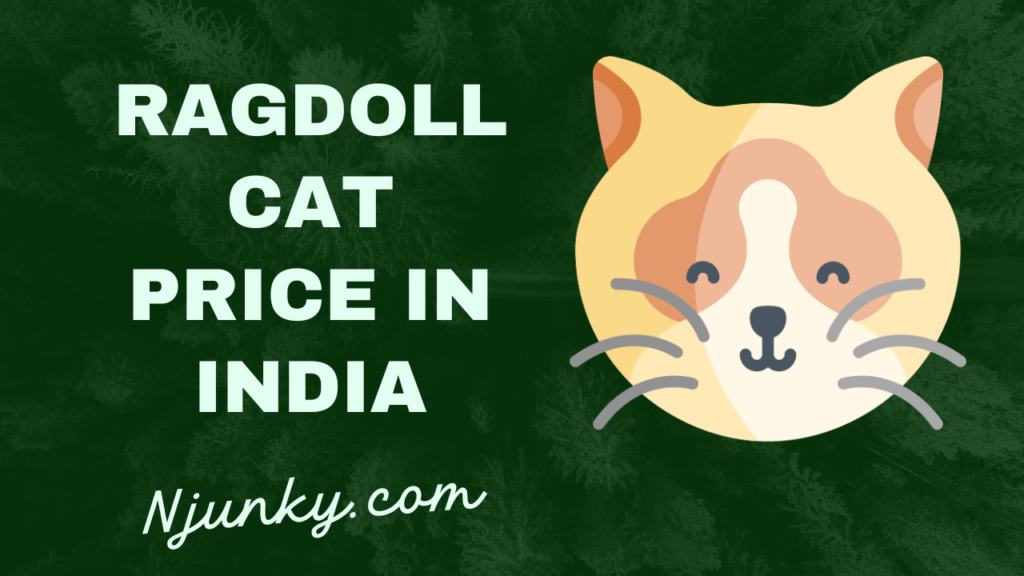The Bengal cat, with its mesmerizing coat adorned with striking rosettes, has captured the hearts of cat enthusiasts around the world. Originally developed through the selective breeding of domestic cats and the Asian leopard cat, Bengal cats have gained immense popularity due to their wild and exotic appearance, coupled with their affectionate and playful personalities. In India, these captivating felines have also found a devoted following among cat lovers seeking a unique and captivating companion.
One aspect that often arises when considering Bengal cats is their price. As with any exotic breed, the Bengal cat’s cost can vary depending on several factors such as lineage, quality, coat pattern, and breeder reputation. Understanding the Bengal cat price in India can help potential owners make informed decisions and ensure they provide the best care for their feline friend.
In this article, we will delve into the world of Bengal cat price in India, exploring the factors that influence their cost and shedding light on the approximate price range one can expect when bringing home these enchanting creatures. Whether you are a Bengal cat enthusiast or simply curious about the costs associated with owning one, join us as we navigate through the world of Bengal cat prices in India and unravel the fascinating journey of acquiring this unique and beautiful companion.
Average Bengal Cat Price In India
The average Bengal cat price in India refers to the typical cost of purchasing a Bengal cat from a breeder or a pet store in India. The Bengal cat is a unique and sought-after breed known for its distinctive coat pattern resembling that of a wild leopard or jaguar. It is a hybrid breed created by crossing domestic cats with Asian leopard cats.
The price of a Bengal cat in India can vary depending on various factors such as the cat’s pedigree, quality, age, and breeder reputation. On average, Bengal Cat Price In India is between ₹25,000 to ₹75,000 INR. However, it’s important to note that these Bengal Cat Price In India are approximate and can fluctuate. Additionally, prices for show-quality Bengal cats with exceptional lineage and markings can be significantly higher, ranging from ₹75,000 to ₹2,00,000 INR or even more. It’s always advisable to research and connect with reputable Bengal cat breeders to get the most accurate and up-to-date pricing information.
It is advisable to research and visit multiple breeders or pet stores to compare Bengal Cat Price In India, ask questions about the cat’s lineage and health, and ensure you are making an informed decision when acquiring a Bengal cat in India.
Bengal Cat Price across different regions In India
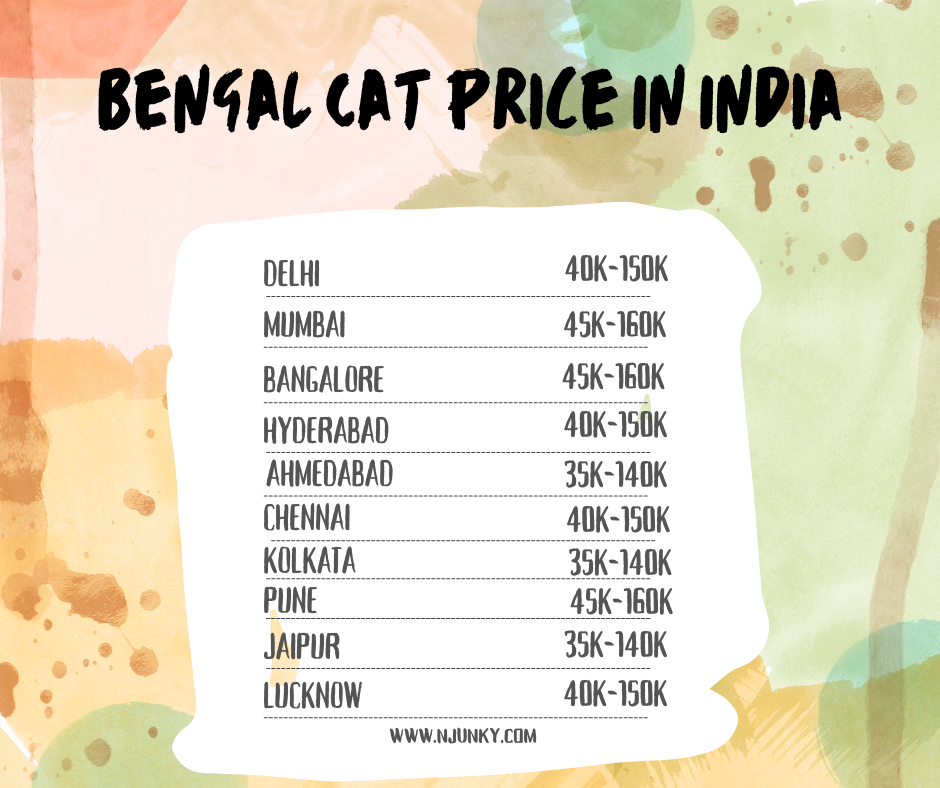
Bengal cats are one of the most popular breeds of domestic cats in India. They are known for their exotic and wild appearance, as well as their playful and affectionate nature. Bengal cat enthusiasts from all over India are often interested in knowing the price range of these felines. However, Bengal cat prices vary across different regions in India. Here’s a table showcasing the average Bengal cat prices across different regions in India.
| No | Region | Average Price Range (INR) |
| 1 | Bengal Cat Price In Delhi | 40,000 – 1,50,000 |
| 2 | Bengal Cat Price In Mumbai | 45,000 – 1,60,000 |
| 3 | Bengal Cat Price In Kolkata | 35,000 – 1,40,000 |
| 4 | Bengal Cat Price In Chennai | 40,000 – 1,50,000 |
| 5 | Bengal Cat Price In Bangalore | 45,000 – 1,60,000 |
| 6 | Bengal Cat Price Hyderabad | 40,000 – 1,50,000 |
| 7 | Bengal Cat Price In Ahmedabad | 35,000 – 1,40,000 |
| 8 | Bengal Cat Price In Pune | 45,000 – 1,60,000 |
| 9 | Bengal Cat Price Jaipur | 35,000 – 1,40,000 |
| 10 | Bengal Cat Price In Lucknow | 40,000 – 1,50,000 |
| 11 | Bengal Cat Price Chandigarh | 45,000 – 1,60,000 |
| 12 | Bengal Cat Price In Kochi | 40,000 – 1,50,000 |
| 13 | Bengal Cat Price Indore | 35,000 – 1,40,000 |
| 14 | Bengal Cat Price In Guwahati | 40,000 – 1,50,000 |
| 15 | Bengal Cat Price In Bhubaneswar | 45,000 – 1,60,000 |
Types of Bengal Cat
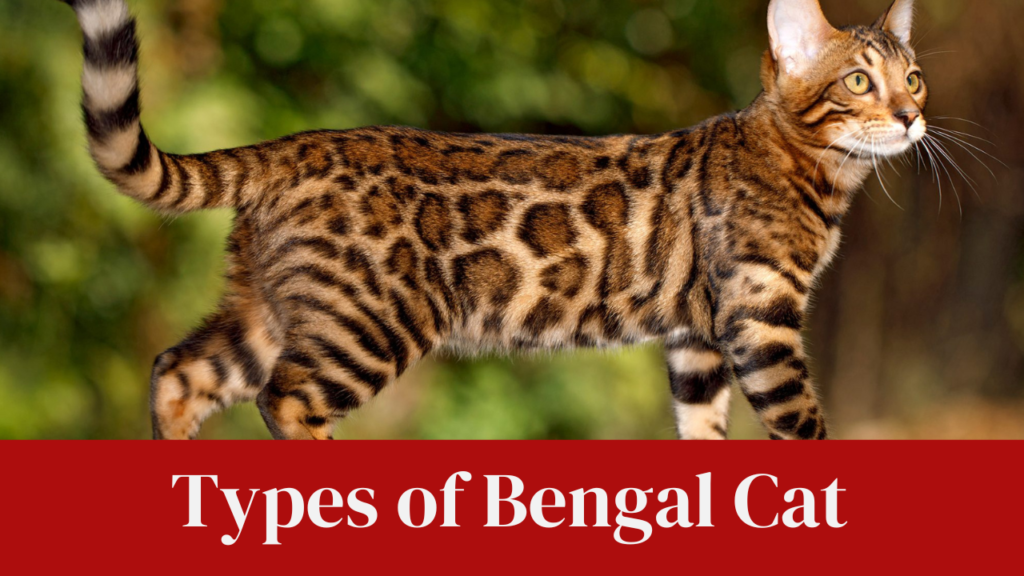
There are several recognized types of Bengal cats, which are determined by their coat patterns and colors. Here are some common types of Bengal cats:
1. Spotted Bengal: Spotted Bengals have a coat pattern that features distinctive spots or rosettes. These spots can be large or small, and they may be arranged in a random or horizontal pattern across the cat’s body.
2. Marbled Bengal: Marbled Bengals have a unique coat pattern that resembles swirling or marbling, often with a horizontal flow. The marbling can come in various colors, such as brown, silver, or snow, and creates a beautiful and intricate pattern on the cat’s coat.
3. Snow Bengal: Snow Bengals have a coat color that ranges from creamy white to light tan, often with contrasting spots or marbling in various shades of brown. Snow Bengals come in three recognized color variations: seal lynx point, seal mink, and seal sepia.
4. Silver Bengal: Silver Bengals have a coat that is characterized by a silvery or pale background color with black or dark gray spots or marbling. The contrast between the silver and black markings creates a striking appearance.
5. Charcoal Bengal: Charcoal Bengals have a darker coat color than the typical brown Bengals. The coat may appear black or very dark brown, with lighter markings that can be either spots or marbling. The charcoal gene intensifies the overall coloration of the Bengal.
6. Melanistic Bengal: Melanistic Bengals have a coat that is predominantly black, with very faint or no visible markings. The melanistic gene causes an increase in the production of black pigments, resulting in a nearly solid black appearance.
Overview of Bengal Cats and Their Popularity
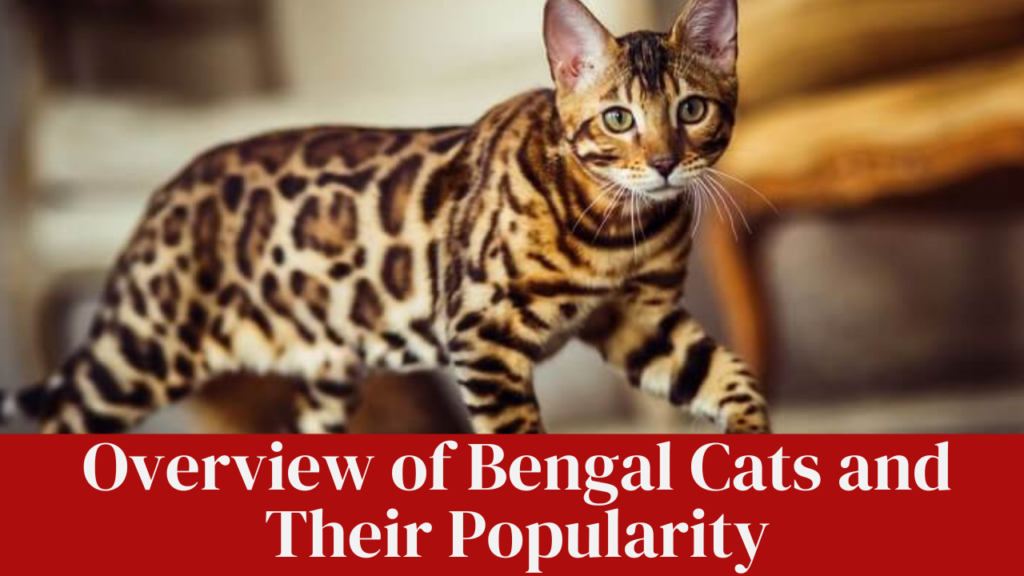
Bengal cats are a unique and striking breed known for their distinctive coat pattern resembling that of wild leopards or jaguars. Here’s an overview of Bengal cats and their popularity:
Origin:
Bengal cats are a relatively new breed that was developed through selective breeding between domestic cats and the Asian leopard cat (ALC). They were first created in the 1960s by a breeder named Jean Mill, who aimed to combine the exotic appearance of wild cats with the friendly temperament of domestic cats.
Physical Characteristics:
Bengal cats have a muscular and athletic build with a medium to large size. They have a short, dense, and soft coat with a variety of colors and patterns, including spotted, marbled, and rosetted patterns. Their coat colors can range from brown, silver, and charcoal to snow (a lighter, more contrasted coat).
Temperament:
Bengal cats are known for their active, playful, and energetic nature. They are highly intelligent and curious, often displaying dog-like behaviors such as playing fetch and learning tricks. They enjoy interactive play, climbing, and exploring their surroundings. Bengal cats can be affectionate and form strong bonds with their owners, but they may also retain some of the wild instincts from their leopard cat ancestry.
Popularity:
Bengal cats have gained significant popularity among cat enthusiasts and pet owners around the world. Their exotic appearance and resemblance to wild cats contribute to their allure. They are often considered an exotic and unique choice for those seeking a visually striking and active companion. Their popularity has resulted in an increase in breeders and the availability of Bengal cats in many countries, including India.
Care and Maintenance:
Bengal cats require proper care and attention to ensure their well-being. They have a high energy level and need regular exercise and mental stimulation. Providing them with interactive toys, scratching posts, and vertical spaces to climb can help keep them entertained. Grooming needs are relatively low, with occasional brushing to maintain their coat’s health and cleanliness.
Legal Considerations:
In some countries and regions, including India, there may be specific regulations or restrictions on owning Bengal cats due to their wild ancestry. It’s important to research and understand the local laws and requirements before acquiring a Bengal cat as a pet.
Bengal Cat Associations:
Bengal cats are recognized by various cat associations worldwide, including The International Cat Association (TICA) and the Cat Fanciers’ Association (CFA). These associations provide breed standards, guidelines, and support for Bengal cat breeders and enthusiasts.
Factors Affecting Bengal Cat Price in India
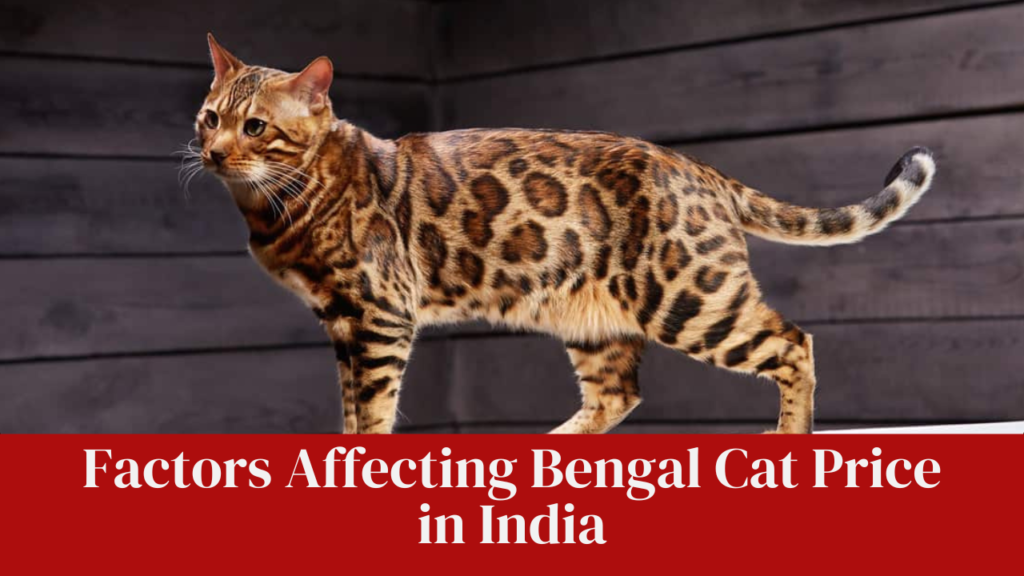
Several factors can influence the price of Bengal cats in India. Here are some key factors that can affect Bengal cat price in India:
- Quality and Lineage: Bengal cats with superior quality, conforming closely to the breed standards, and having a strong lineage of championship titles and awards tend to have higher prices. Cats with desirable coat patterns, colorations, and markings command a premium.
- Breeder Reputation: The reputation and experience of the breeder play a significant role in determining the Bengal Cat Price In India. Established and reputable breeders who prioritize the health, well-being, and proper breeding practices of their cats often charge higher prices for their Bengal kittens.
- Show Potential: Bengal cats with show potential, meaning they exhibit exceptional qualities that make them suitable for participating in cat shows, may have higher prices. These cats typically possess specific traits, such as excellent conformation, outstanding coat markings, and a captivating presence.
- Gender: In some cases, gender can impact the price of Bengal cats. Female cats are generally priced higher than males, especially if they are of breeding quality, as they have the potential to produce future litters.
- Age: Age can influence the Bengal Cat Price In India. Kittens are typically more expensive compared to adult cats because they have a longer lifespan ahead and are more sought after as companions.
- Location: The region or city in which the breeder is located can also affect the Bengal Cat Price In India. Bengal cats in metropolitan cities or regions with higher demand may have slightly higher prices compared to those in less populated areas.
- Availability and Demand: The availability of Bengal cats in the market and the level of demand can impact their prices. If there is a limited supply of Bengal cats and high demand from potential buyers, prices may be higher.
You May Also Like
Maintenance and care Cost of Bengal cat
The maintenance and care cost of a Bengal cat can vary depending on several factors, including the cat’s health, age, specific needs, and personal preferences. Here are some common expenses to consider:
- Food: High-quality cat food is essential for the overall health and well-being of your Bengal cat. Expect to spend around INR 5000 to INR 8,000 per month on premium cat food.
- Litter: Bengal cats need a clean litter box, and you’ll need to budget for litter supplies. The cost can range from INR 500 to INR 1,000 per month.
- Veterinary Care: Regular veterinary check-ups, vaccinations, and preventive care are crucial for your Bengal cat’s health. Budget for annual vaccinations, deworming, and occasional health issues. The cost can vary significantly but may range from INR 2,000 to INR 5,000 annually.
- Grooming: Bengal cats have short, dense coat that requires minimal grooming. However, occasional brushing can help maintain a healthy coat. You may also consider nail trims and dental care. Budget around INR 500 to INR 1,000 per year for grooming supplies and services.
- Toys and Enrichment: Bengal cats are active and intelligent, so providing toys and mental stimulation is important. Budget for toys, scratching posts, and other interactive play items. The cost can vary but expect to spend around INR 500 to INR 1,000 per year.
- Insurance: Consider pet insurance to help cover unexpected medical expenses. The cost of insurance will depend on factors such as the cat’s age, breed, and coverage plan. Prices can range from INR 1,500 to INR 5,000 per month.
- Other Expenses: Additional costs may include spaying or neutering (if not done already), microchipping, flea and tick prevention, and occasional purchases like bedding or carriers.
Where to Buy Authentic Bengal Cats in India
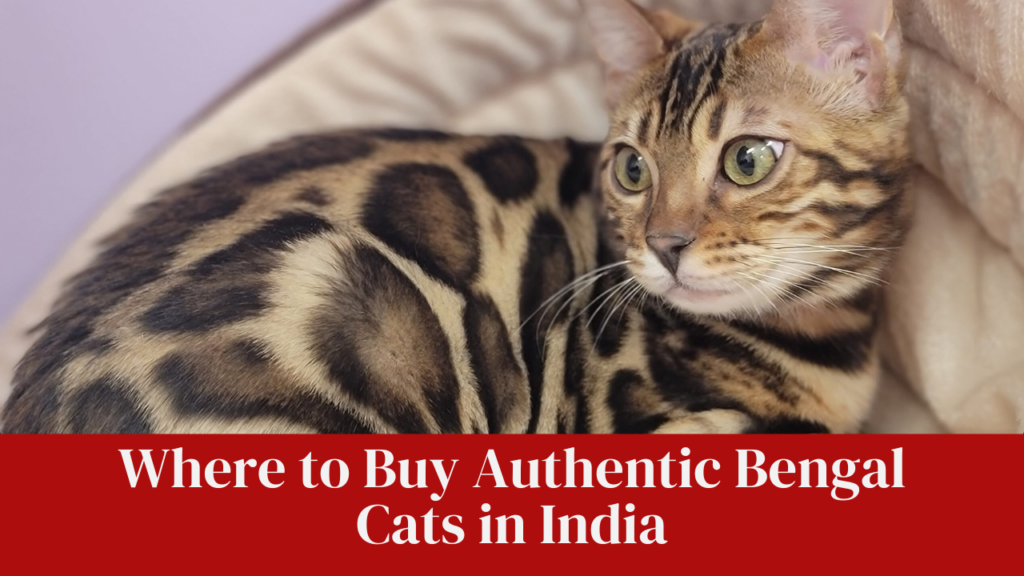
To buy authentic Bengal cats in India, it is important to connect with reputable breeders or catteries who specialize in Bengal cats. Here are some ways to find authentic Bengal cat breeders in India:
Cat Associations: Contact recognized cat associations in India such as the Indian Cat Federation (ICF) or the Cat Fanciers’ Association of India (CFAI). These associations can provide information on registered Bengal cat breeders who adhere to breed standards and ethical breeding practices.
Online Directories: Look for online directories or websites that list Bengal cat breeders in India. Examples include pet classified websites, breed-specific directories, or Bengal cat enthusiast forums. These platforms often provide breeder profiles, contact information, and customer reviews.
Cat Shows and Exhibitions: Attend cat shows and exhibitions in your area. Bengal cat breeders often participate in such events to showcase their cats and connect with potential buyers. These events provide an opportunity to meet breeders in person, see their cats, and inquire about upcoming litters or available kittens.
Referrals and Recommendations: Seek referrals from trusted sources such as local veterinarians, Bengal cat owners, or cat clubs. They may have firsthand experience with reputable breeders and can provide valuable recommendations based on their interactions.
common health issues and their treatments
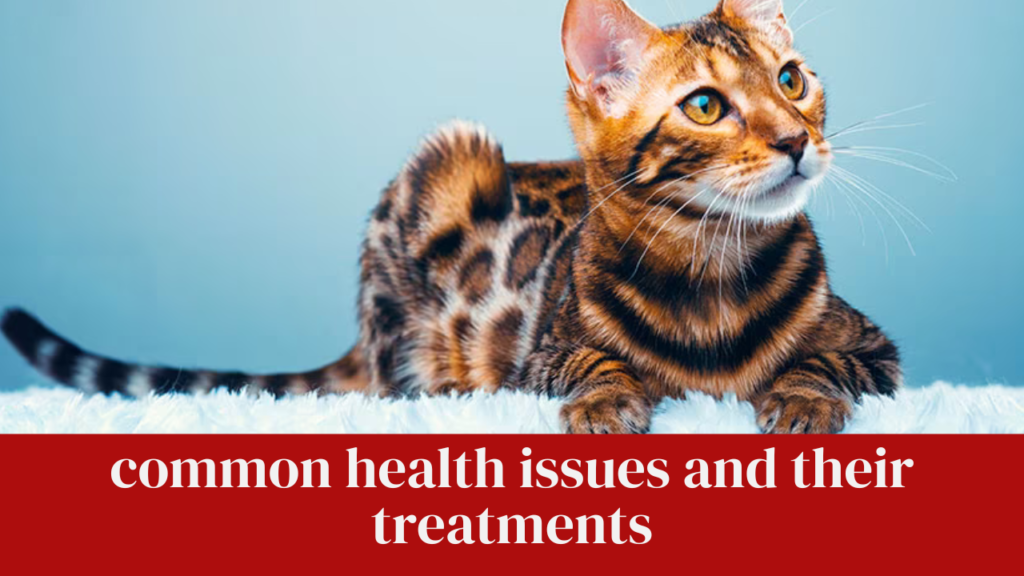
While Bengal cats are generally healthy, they can still be prone to certain health issues. Here are some common health issues that can affect Bengal cats and their potential treatments:
1. Hypertrophic Cardiomyopathy (HCM):
This is a heart condition characterized by the thickening of the heart muscles. Treatment options may include medications to manage symptoms, such as beta-blockers or ACE inhibitors and regular monitoring by a veterinarian.
2. Progressive Retinal Atrophy (PRA):
PRA is a genetic eye disease that can lead to progressive vision loss and eventual blindness. Unfortunately, there is no cure for PRA. Regular veterinary check-ups and supportive care can help manage the condition and ensure the cat’s comfort.
3. Polycystic Kidney Disease (PKD):
PKD is an inherited condition that causes the formation of fluid-filled cysts in the kidneys. Treatment involves supportive care to manage symptoms, such as medication for high blood pressure or special diets to support kidney health.
4. Gastrointestinal Issues:
Bengal cats can experience gastrointestinal problems like diarrhea, vomiting, or food allergies. Treatment may involve dietary adjustments, such as a limited ingredient or hypoallergenic diet, and medications to alleviate symptoms or address underlying causes, like antibiotics for gastrointestinal infections.
5. Feline Leukemia Virus (FeLV) and Feline Immunodeficiency Virus (FIV):
These are viral infections that weaken the immune system, making cats more susceptible to other infections and diseases. There is no cure for these viral diseases, so management focuses on supportive care, including regular veterinary check-ups, vaccination protocols, and minimizing exposure to other cats to prevent transmission.
6. Urinary Tract Issues:
Bengal cats may be prone to urinary tract issues like urinary tract infections or blockages. Treatment typically involves antibiotics for infections, dietary changes to promote urinary health, increased water intake, and sometimes catheterization or surgery to address blockages.
Final Thoughts
In conclusion, Bengal cats have become increasingly popular among cat lovers in India. The price of a Bengal cat in India varies greatly depending on various factors such as breeder reputation, pedigree, and age. It is important to do thorough research before making a purchase to ensure that you are getting a healthy and well-bred kitten from a reputable breeder.
While owning a Bengal cat can be expensive, the joy and companionship they bring make it worth the investment for many people. If you are considering getting a Bengal cat in India, take your time to find the right breeder and prepare yourself for the responsibility of caring for this unique and special breed.
FAQs
Are Bengal cats wild or domestic?
A: Bengal cats are domestic cats. Although they have the appearance of wild cats, they are entirely domesticated and are not considered wild animals.
How big do Bengal cats get?
A: Bengal cats are generally medium to large in size. On average, male Bengal cats weigh between 10 to 15 pounds (4.5 to 6.8 kg), while females typically weigh between 7 to 10 pounds (3.2 to 4.5 kg).
Do Bengal cats get along with other pets?
A: Bengal cats can generally get along well with other pets, including other cats and dogs if properly introduced and socialized from a young age. However, individual personalities can vary, so gradual introductions and supervised interactions are recommended.
Are Bengal cats hypoallergenic?
A: No, Bengal cats are not hypoallergenic. They do produce the allergenic protein Fel d 1, which can trigger allergies in susceptible individuals. However, some people with allergies may find that they have fewer symptoms with Bengal cats compared to other breeds.
How long do Bengal cats live?
A: On average, Bengal cats have a lifespan of around 12 to 16 years. With proper care, some Bengal cats have been known to live even longer.
Q: Are Bengal cats noisy?
A: Bengal cats are not particularly known for being noisy. However, like any other cat, they may vocalize occasionally to communicate their needs or express themselves. Each cat has its own personality, so individual Bengal cats may vary in their vocal tendencies.
Q: Are Bengal cats loyal?
A: Bengal cats can develop strong bonds with their human companions and can exhibit loyal behavior. They often enjoy being near their owners, following them around the house, and participating in their activities. However, loyalty can also vary depending on the individual cat and their upbringing and socialization experiences.
Are Bengal cats suitable for families with children?
A: Bengal cats can be suitable for families with children, especially older children who understand how to interact gently with cats. It’s important to teach children to respect the cat’s boundaries and provide them with proper socialization and playtime.
What kind of environment do Bengal cats need?
A: Bengal cats thrive in an environment that provides mental and physical stimulation. They enjoy having access to high perches, scratching posts, interactive toys, and opportunities for play and exercise. A secure and spacious indoor area is recommended, as they have a strong prey drive and may try to escape.


